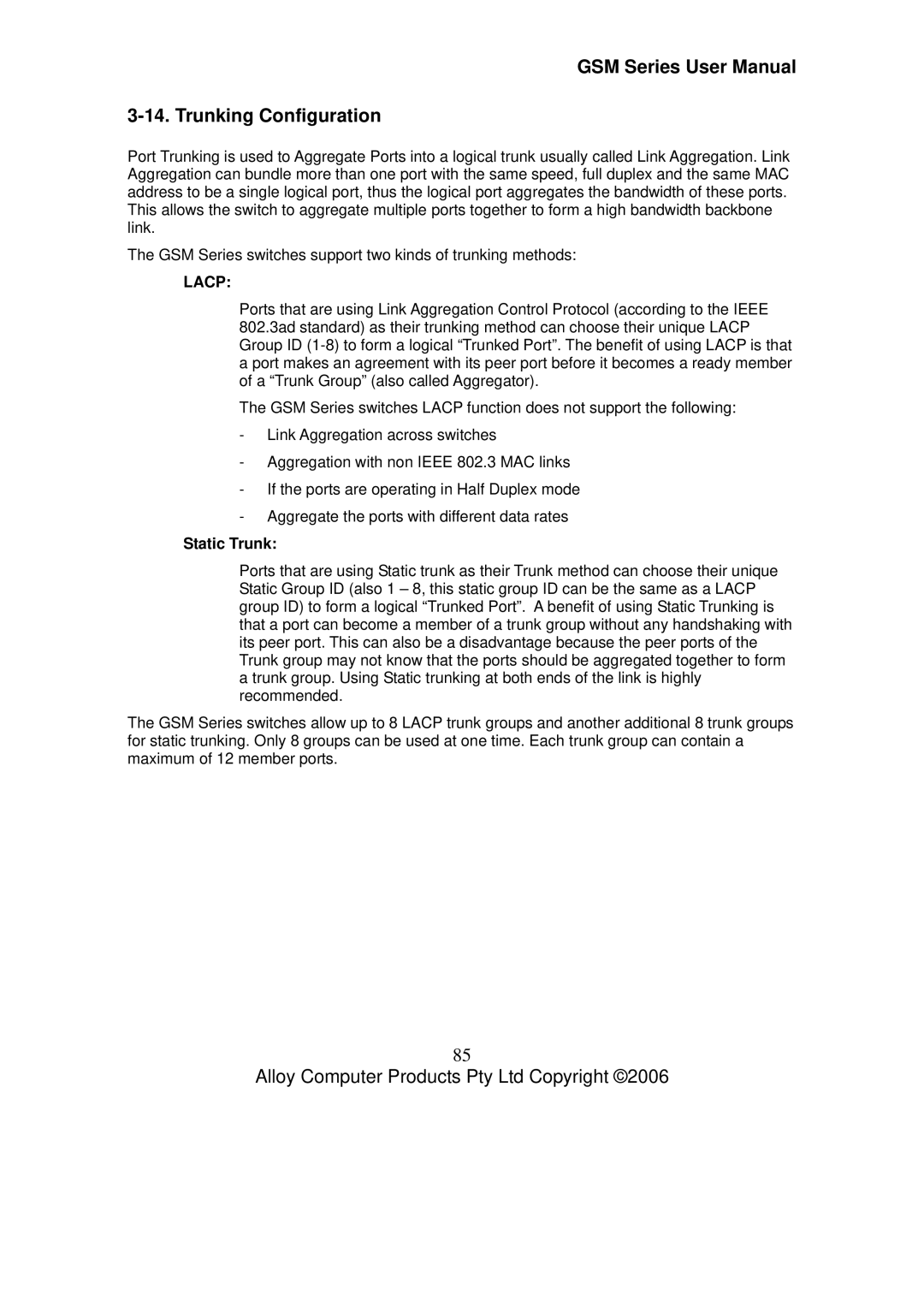GSM Series User Manual
3-14. Trunking Configuration
Port Trunking is used to Aggregate Ports into a logical trunk usually called Link Aggregation. Link Aggregation can bundle more than one port with the same speed, full duplex and the same MAC address to be a single logical port, thus the logical port aggregates the bandwidth of these ports. This allows the switch to aggregate multiple ports together to form a high bandwidth backbone link.
The GSM Series switches support two kinds of trunking methods:
LACP:
Ports that are using Link Aggregation Control Protocol (according to the IEEE 802.3ad standard) as their trunking method can choose their unique LACP Group ID
The GSM Series switches LACP function does not support the following:
-Link Aggregation across switches
-Aggregation with non IEEE 802.3 MAC links
-If the ports are operating in Half Duplex mode
-Aggregate the ports with different data rates
Static Trunk:
Ports that are using Static trunk as their Trunk method can choose their unique Static Group ID (also 1 – 8, this static group ID can be the same as a LACP group ID) to form a logical “Trunked Port”. A benefit of using Static Trunking is that a port can become a member of a trunk group without any handshaking with its peer port. This can also be a disadvantage because the peer ports of the Trunk group may not know that the ports should be aggregated together to form a trunk group. Using Static trunking at both ends of the link is highly recommended.
The GSM Series switches allow up to 8 LACP trunk groups and another additional 8 trunk groups for static trunking. Only 8 groups can be used at one time. Each trunk group can contain a maximum of 12 member ports.
85
Alloy Computer Products Pty Ltd Copyright ©2006
